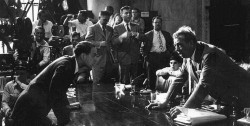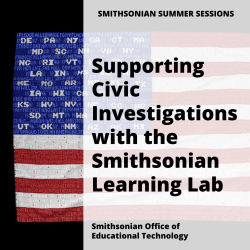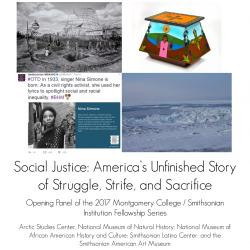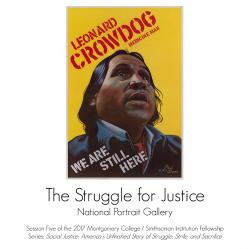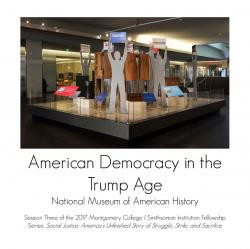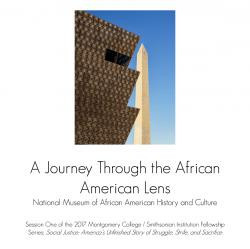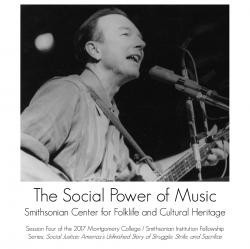Tess Porter
User Experience Strategist (she/her)
Smithsonian Office of Educational Technology
I'm the former User Experience Strategist at the Smithsonian Office of Educational Technology. Here, I focused on the use of digital museum resources to support teaching and learning. My work draws on my experience as a museum educator, digital analyst, usability researcher, and content designer. I hold a B.A. in Anthropology and a B.A. in Art History from University Colorado Boulder, and an M.S. in Museums and Digital Culture with an Advanced Certificate in User Experience from Pratt Institute.
Tess Porter's collections
Yup'ik Parka: Object Analysis
<p>This introductory student activity explores the Yup'ik gut parka, a type of garment created from the intestines of sea mammals to protect sea hunters from wind, rain, and stormy seas. The Yup'ik, native to Alaska and coastal Canada, used these not only for hunting but also spiritual occasions, such as religious ceremonies. Collection includes: two parkas, one for hunting and one for ceremonies; a map of the geographic boundaries of the Yup'ik before the arrival of Euro-American settlers; and a video of modern Yup'ik discussing the traditional process of creating these garments and the importance of conserving and continuing this tradition today.</p>
<p>Collection can be used as an introductory activity to an investigation of: Yup'ik culture, Yup'ik relationships to their environment, Arctic cultures, Native American innovations, or the importance of continuing traditions.<br /></p>
<p>Keywords: american indian, sea mammals, gutskin, conservation, yupik<br /></p>
 Tess Porter
Tess Porter
5
Woody Guthrie: Examining Portraiture
<p>This teacher's guide provides portraits and analysis questions to enrich students' examination of Woody Guthrie, one of the most important folk composers in American history. Includes the video "Defining Portraiture: How are portraits both fact and fiction?" and the National Portrait Gallery's "<em>Reading" Portraiture Guide for Educators, </em>both of which provide suggestions and questions for analyzing portraiture. Also includes multiple music recordings, a Smithsonian Magazine article about his legacy, and a podcast episode about his music and relationship with Smithsonian Folkways Recordings.</p>
<p>Consider:</p>
<ul><li>What do these portraits have in common? How are they different?</li><li>How are these portraits both fact and fiction?</li><li>How do these portraits reflect how he wanted to be seen, or how others wanted him to be seen? Consider for what purpose these portraits were created.</li><li>Having listened to his music, does the portrait capture your image of Woody Guthrie? Why, or why not?</li><li>If you were creating your own portrait of Guthrie, what characteristics would you emphasize, and why?</li></ul><p>Keywords: singer, musician, songwriter, oklahoma, protest, #SmithsonianMusic</p>
 Tess Porter
Tess Porter
12
William Faulkner: Examining Portraiture
<p>This teacher's guide provides portraits and analysis questions to enrich students' examination of William Faulkner, an American author and Nobel Prize laureate. Includes the video "Defining Portraiture: How are portraits both fact and fiction?" and the National Portrait Gallery's "<em>Reading" Portraiture Guide for Educators, </em>both of which provide suggestions and questions for analyzing portraiture. </p>
<p>Consider:</p>
<ul><li>What do these portraits have in common? How are they different?</li><li>How are these portraits both fact and fiction?</li><li>How do these portraits reflect how they wanted to be seen, or how others wanted them to be seen? Consider for what purpose these portraits were created (such as the caricature, stamp, etc.).</li><li>Having read one of his stories, does the portrait capture your image of William Faulkner? Why, or why not?</li><li>If you were creating your own portrait of William Faulkner, what characteristics would you emphasize, and why?</li></ul><p>Keywords: mississippi, ms, the sound and the fury, writer</p>
 Tess Porter
Tess Porter
6
Understanding Ancient Civilizations through Artifacts
<p>Resources supporting the April 2016 Google Hangout facilitated by the Freer Gallery of Art and Arthur M. Sackler Gallery in coordination with the Smithsonian Office of Educational Technology.</p>
 Tess Porter
Tess Porter
22
The Red Scare
<p>This collection features resources (photographs, portraits, documents, articles, and videos) about the Second Red Scare (1947-57), a period of anti-communist fear, also known as "McCarthyism," that spread through American life at the beginning of the Cold War. Resources include key people, such as Joseph McCarthy, Edward R. Murrow, Alger Hiss, and Ethel and Julius Rosenberg, letters documenting a university's requirement that faculty affirm they were not members of the Communist Party, individuals targeted by House Un-American Activities Committee, and more.</p>
<p>This collection provides a launching point for further research and should not be considered comprehensive.</p>
<p>Keywords: communism, anti-communism, anticommunism, HUAC, HCUA, hollywood blacklist, ray cohn </p>
 Tess Porter
Tess Porter
45
The Classical Origin of Iconic American Symbols
<p>In this student activity, analyze how and why iconic symbols of America, such as the Capitol Building and the United States Seal, were inspired by Greek and Roman art and architecture. </p>
<p>Explores the big ideas:</p>
<p></p>
<ul><li>How were symbols of America influenced by those of Ancient Greece and Rome? </li><li>What might this desire to associate America with historic, successful democracies say about early American hopes for their new nation?</li></ul><p></p>
<p>Includes: architecture, a seal, portraiture, a video, a primary source letter, discussion questions, and an opportunity to learn more through the full digitized text of "The Ruins of Palmyra," a publication that heavily inspired early American neoclassical architecture.</p>
<p>Keywords: greece, symbolism, classic, classical</p>
 Tess Porter
Tess Porter
12
Supporting Civic Investigations with the Smithsonian Learning Lab
<p>Created to support the 2022 <em>Smithsonian Summer Sessions</em> workshop, “Supporting Civic Investigations with the Smithsonian Learning Lab,” this collection gathers resources and pedagogical approaches to investigate "the people" as a political concept with students. This collection is inspired by Educating for American Democracy's content theme, <a href="https://www.educatingforamericandemocracy.org/the-roadmap/7themes/#we-the-people" target="_blank">We the People</a>.</p>
<p>The 2022 <em></em><em>Smithsonian Summer Sessions: Inspiring Civic Engagement </em>is a virtual professional development opportunity. Held synchronously in late June 2022, it will be made available as a free, asynchronous virtual course in Fall 2022. </p>
<p>#SummerSessions</p>
 Tess Porter
Tess Porter
26
Suffrage Pin: Object Analysis
<p>Using the Project Zero Visible Thinking routine "See Think Wonder," this activity explores the struggle of suffragists during the American suffrage movement through deep analysis of one object - a pin, worn by suffragist Alice Paul, in the shape of a jail door with a heart-shaped lock. Pins such as these were given in a ceremony to suffragists who were imprisoned as a result of the 1917 pickets. Includes the pin, an article discussing the history behind the pin, and multiple photographs suffragist picketers.</p>
<p>Keywords: women's rights, suffrage, suffragette, protest, reform, civil rights, equal rights, alice paul, jailed for freedom, pin, national women's party, nwp, voting, vote</p>
 Tess Porter
Tess Porter
6
Social Justice: Opening Panel Resources
<p>This collection previews the opening panel of the 2017 Montgomery College / Smithsonian Institution Fellowship seminar series, <em>Social Justice: America's Unfinished Story of Struggle, Strife, and Sacrifice</em>. Four Smithsonian staff members will speak at this event: Igor Krupnik (Arctic Studies Center, Department of Anthropology, National Museum of Natural History), Lanae Spruce (National Museum of African American History and Culture), Ranald Woodaman (Smithsonian Latino Center), and E. Carmen Ramos (Smithsonian American Art Museum).</p>
<p>Each text annotation in this collection contains each speaker's presentation title, description, and bio. Following each text annotation are resources and questions chosen by the presenters for participants to consider before the panel itself.</p>
<p>#MCteach<br /></p>
 Tess Porter
Tess Porter
17
Social Justice: National Museum of African American History and Culture Resources
<p>This collection previews the first seminar of the 2017 Montgomery College / Smithsonian Institution Fellowship seminar series, <em>A Journey Through the African American Lens</em>. Five National Museum of African American History and Culture staff members will lead this event: Kinshasha Holman Conwill, Dr. Rex Ellis, Dr. Jacquelyn Serwer, Dr. Michèle Gates Moresi, and Mary Elliott.</p>
<p>Resources and reflection questions included in this collection have been chosen by the presenters for participants to explore, consider, and answer before the seminar itself. Fellows will be asked to discuss their answers to the reflection questions during the seminar. </p>
<p>#MCteach</p>
 Tess Porter
Tess Porter
41
Social Justice: Center for Folklife and Cultural Heritage Resources
<p>This collection previews the fourth seminar of the 2017 Montgomery College / Smithsonian Institution Fellowship seminar series, <em>The Social Power of Music</em>. Two staff members from the Smithsonian Center for Folklife and Cultural Heritage will lead this event: James Deutsch and Atesh Sonneborn.</p>
<p>Resources and questions included in this collection have been chosen by the presenters for participants to explore and consider before the seminar itself. Two resources, included at the end of the collection, are optional materials for those interested in addtional background information on Smithsonian Folkways.</p>
<p>#MCteach</p>
 Tess Porter
Tess Porter
7
Slow Looking: Untitled, by El Anatsui
<p>In this collection, students will explore an artwork by El Anatsui, a contemporary artist whose recent work addresses global ideas about the environment, consumerism, and the social history and memory of the "stuff" of our lives. After looking closely and exploring the artwork using an adapted version of Project Zero's "Parts, Purposes, and Complexities" routine, students will create a "diamante" poem using their observations of the artwork and knowledge they gained about El Anatsui's artistic influences. Additional resources about El Anatsui, how to look at African Art, and Project Zero Thinking Routines are located at the end of the collection.</p>
<p><em>This collection was created for the "Smithsonian Learning Lab, Focus on Global Arts and Humanities" session at the 2019 New Jersey Principals and Supervisors Association (NJPSA) Arts Integration Leadership Institute. </em></p>
<p>Keywords: nigeria, african art, textile, poetry, creative writing, analysis</p>
 Tess Porter
Tess Porter
20


